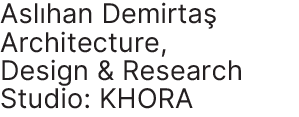Video
with Elif Kendir-Beraha, Ali M. Demirel,
spoken by Fulya Peker and scored by Deniz Doğançay
Commissioned by: birbuçuk for 29.9 km video program at “ISTANBUL UNBOUND: Environmental Approaches to the City” co-organized by Istanbul Research Institute / Pera Museum / birbuçuk
Location: online
Year: 2021
Website: Istanbul Unbound: Environmental Approaches to the City
Calx ruderalis subsp. Istanbulensis (CRI; binomial nomenclature expressly proposed for the taxonomy of anthropogenic geological formations, usually reserved for the classification of living species) is an exemplary formation of the current geological era often found on the Princes’ Islands near Istanbul, a suburban archipelago in the Marmara Sea. A protected urban and historical site since 1984 without motorized traffic, the Princes’ Islands present a stark contrast to the congestion and rapid urban growth within the rest of the city, whose littoral zones constitute a litmus test for the effects of construction waste on marine and terrestrial ecosystems of Istanbul. The best examples of CRI can be found in the Natural History Museum of Istanbul (NHMI). NHMI holds the first collection of its kind; its specimens are collected following the maxim “staying with the trouble” (Haraway, 2016) according to the principles of neo-natural science based on qualitative research, occasionally complemented by quantitative data. The work presented is a video entry for CRI and comprises meanings, concepts, definitions, characteristics, metaphors, symbols, and descriptions of things in several media, but not its counts or measures. In the video, the compressed timescale of this feral geological entity is revealed through a minute observation of its immediate surroundings juxtaposed with its recently formed qualities. What does the inclusion of CRI as a natural formation in a subverted museum of natural history based on qualitative research say about today and the future? What other reasonings and positionings can the research produce beyond the condemnation and criticism of the forces and systems which act upon Istanbul, its growth cycle, and the rights of its non-human residents?
